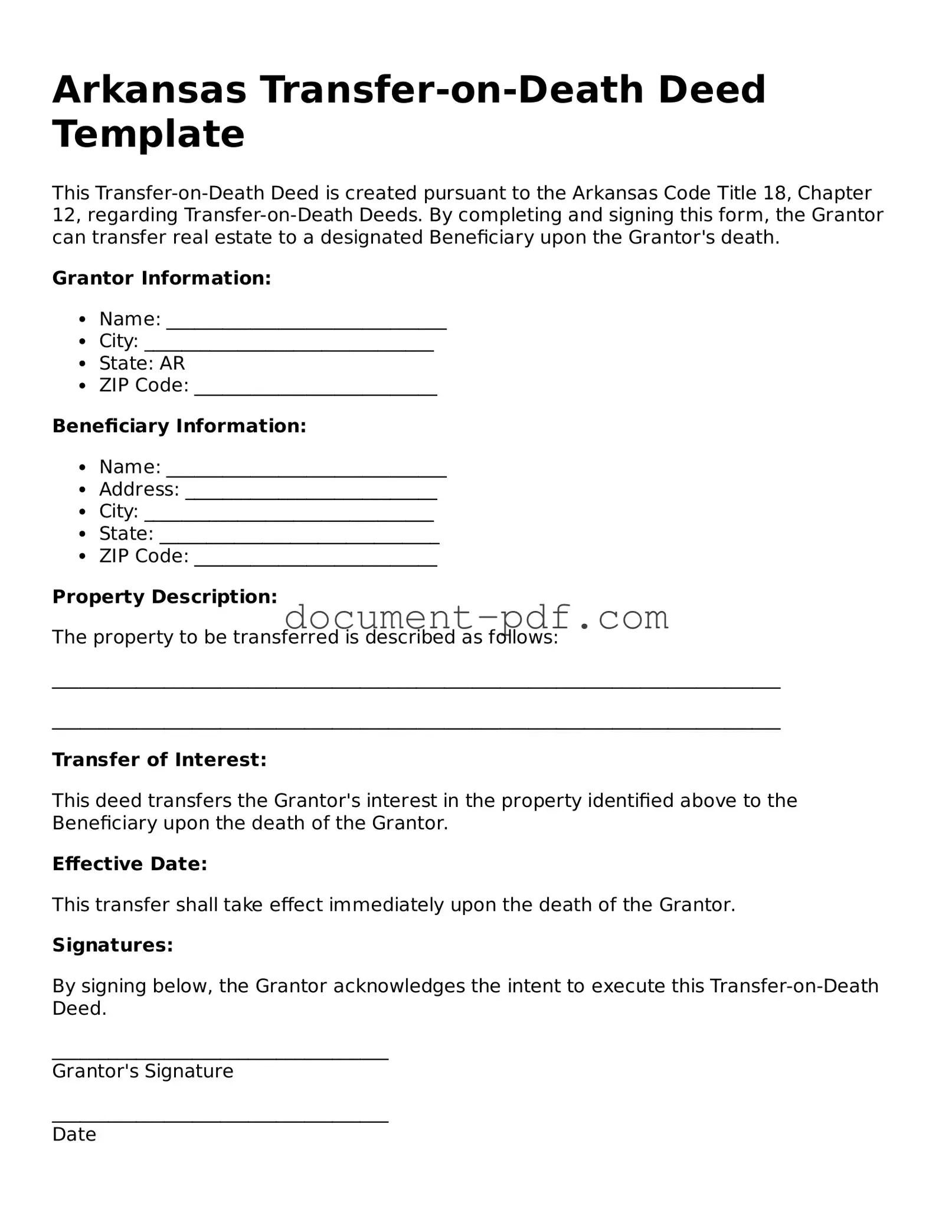Arkansas Transfer-on-Death Deed Template
This Transfer-on-Death Deed is created pursuant to the Arkansas Code Title 18, Chapter 12, regarding Transfer-on-Death Deeds. By completing and signing this form, the Grantor can transfer real estate to a designated Beneficiary upon the Grantor's death.
Grantor Information:
- Name: ______________________________
- City: _______________________________
- State: AR
- ZIP Code: __________________________
Beneficiary Information:
- Name: ______________________________
- Address: ___________________________
- City: _______________________________
- State: ______________________________
- ZIP Code: __________________________
Property Description:
The property to be transferred is described as follows:
______________________________________________________________________________
______________________________________________________________________________
Transfer of Interest:
This deed transfers the Grantor's interest in the property identified above to the Beneficiary upon the death of the Grantor.
Effective Date:
This transfer shall take effect immediately upon the death of the Grantor.
Signatures:
By signing below, the Grantor acknowledges the intent to execute this Transfer-on-Death Deed.
____________________________________
Grantor's Signature
____________________________________
Date
____________________________________
Witness's Signature (if required)
____________________________________
Date
Notarization:
State of Arkansas
County of ___________________________
Subscribed and sworn to before me on this ______ day of ______________, 20___.
____________________________________
Notary Public
(My Commission Expires: ____________)
